We are thrilled to report that the fall leaf colors this season have beat expectations! The rains from Isaac and cool nights have combined to revive plants enough to put on a beautiful display in the gardens. I was busy capturing images of the spectacle early in the week and asked horticulture staff to report any beauties I may have missed. Here's a look at some surprises and the stars in the show (the winner of the pageant is at the end):

Black Walnuts (Juglans nigra) are not usually known for their spectacular fall color but this year they put on their best show I have ever seen. Lumbermen love walnut trees for their high quality timber, chefs for their oil rich nuts with a very unique flavor, naturalists for the wealth of nature they sustain; but vegetable gardeners hate them for their natural herbicide juglone that makes cultivating tomatoes near them impossible. One thing missing this year from walnut trees were webworms -- unsightly to us but a feast for Yellow-billed Cuckoos, a bird that feasts on such hairy caterpillars. The cuckoos left the region early, the webworm moths apparently victims of the drought. You may be celebrating their demise but their loss does hurt the natural web of life this common tree brings to our region. One of those unknown consequences of the drought...
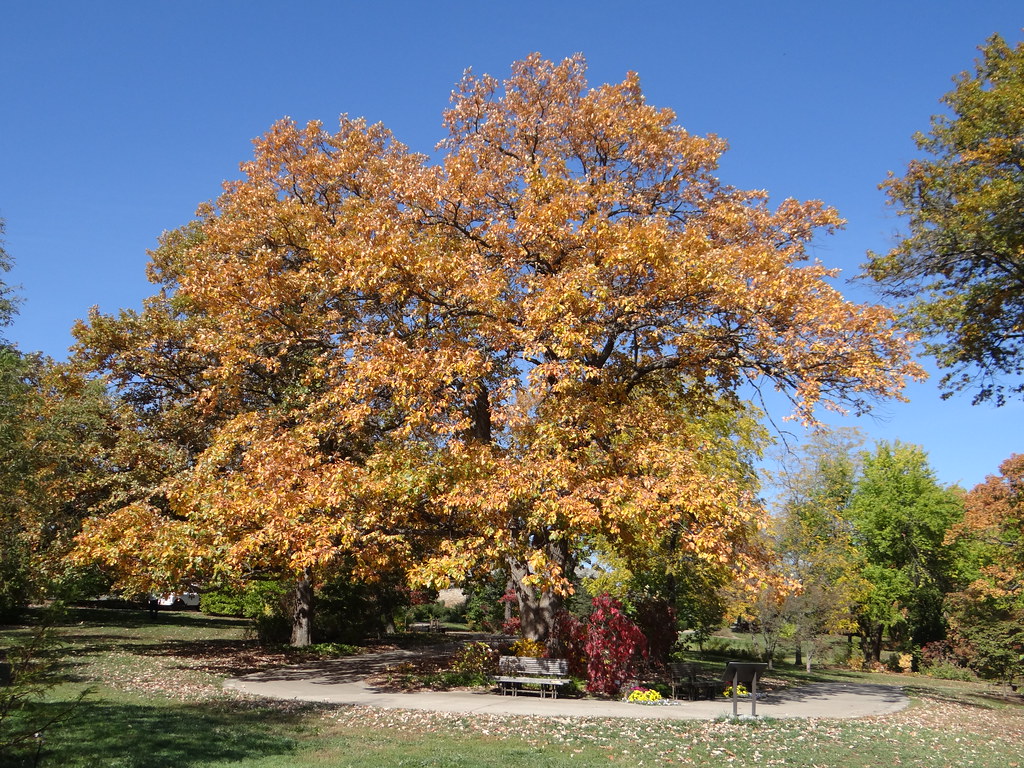
The Swamp White Oaks (Quercus bicolor) cloaked themselves in rich tan -- these oaks are not known for their fall color but more their magnificent stature of broad spreading limbs and tolerance to disturbed soils making them currently the most popular street tree and the tree chosen for the 9-11 Memorial in New York. This is our magnificent specimen on the hairpin curve of the Dogwood Walk.

Maples are loved for their spectacular red fall colors and here are a pair of our Autumn Blaze Maples (Acer x freemanii) blazing better than we've ever seen. This maple is a natural hybrid between the Red Maple (Acer rubrum) known for it brilliant red fall color and the Silver Maple (Acer saccharinum) known for its fast growth, hardiness and adaptability. Since most homeowners select a tree based on its fall color, and want instant gratification, this tree has become quite popular. It is still not a great long-term choice and how it will fare here for future generations is unknown.

This Post Oak (Quercus stellata) has brilliant red fall color too and is a much better choice than a maple for a long term shade tree. It's problem is it is not available from most nurseries as it is slow to start, even though once established it has proved to us it can put on good growth every year and shrug off heat, drought, wind and ice.
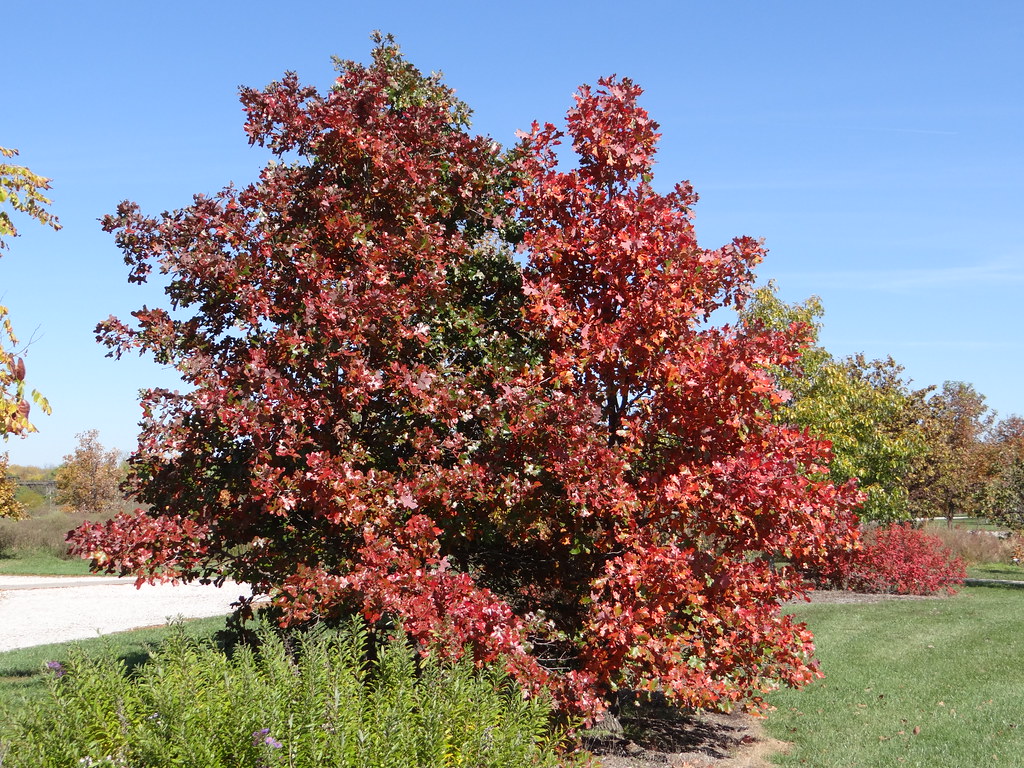
Here is the copse of 3 of Post Oaks in the Parking Lot Arboretum the above closeup image is from. These were planted as small 3 gallon trees from Forrest Keeling Nursery 14 years ago and they are now 15 feet tall. Post Oaks are quintessential Lower Midwest trees -- the magnificent tree in front of P. Allen Smith's new home in Arkansas. They easily live 300 years and are a top tree for wildlife, if you must plant a maple for instant gratification, be sure and plant one of these too for our future.
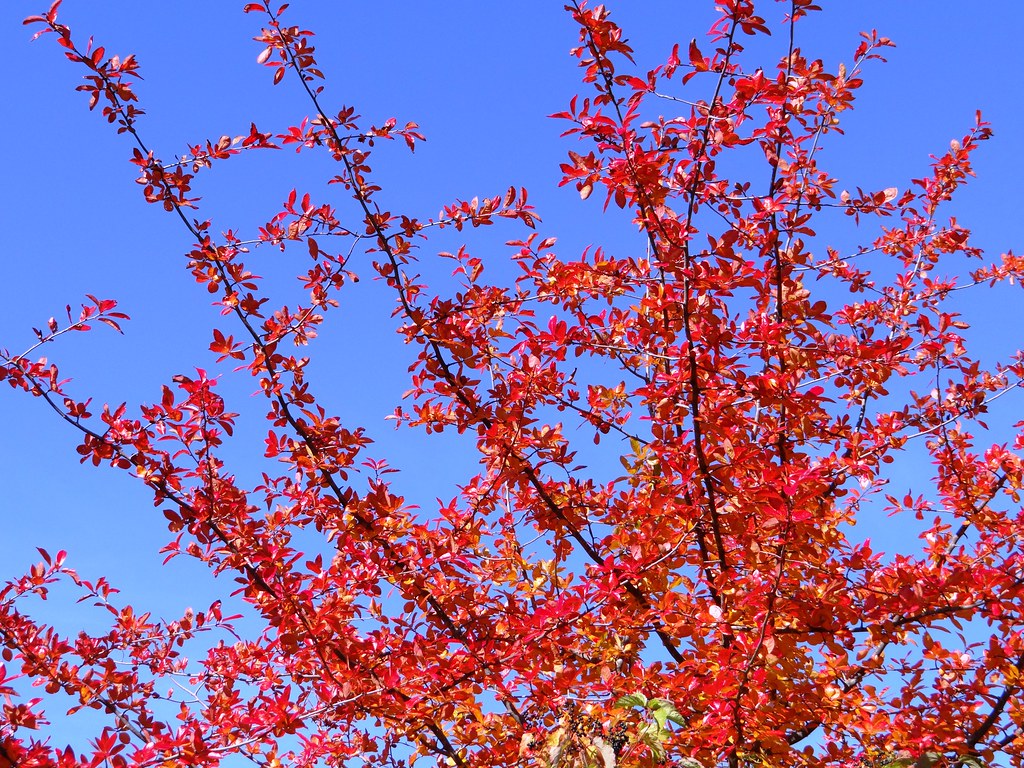
The Blackgum or Tupelo (Nyssa sylvatica) is an almost screaming scarlet in the Perennial Garden. This tree is known from New England to the Ozarks for its simply fabulous fall color. It is a bit of a trick to grow here as you must have good soil and a bit of irrigation helps it though the worst droughts. It makes a stellar garden tree and is dioecious -- either male or female: this is a male (sans fruit).

Here's our female Blackgum near the Perennial Garden Arbor. She produces lovely blue-black fruit many birds will relish later in the season.
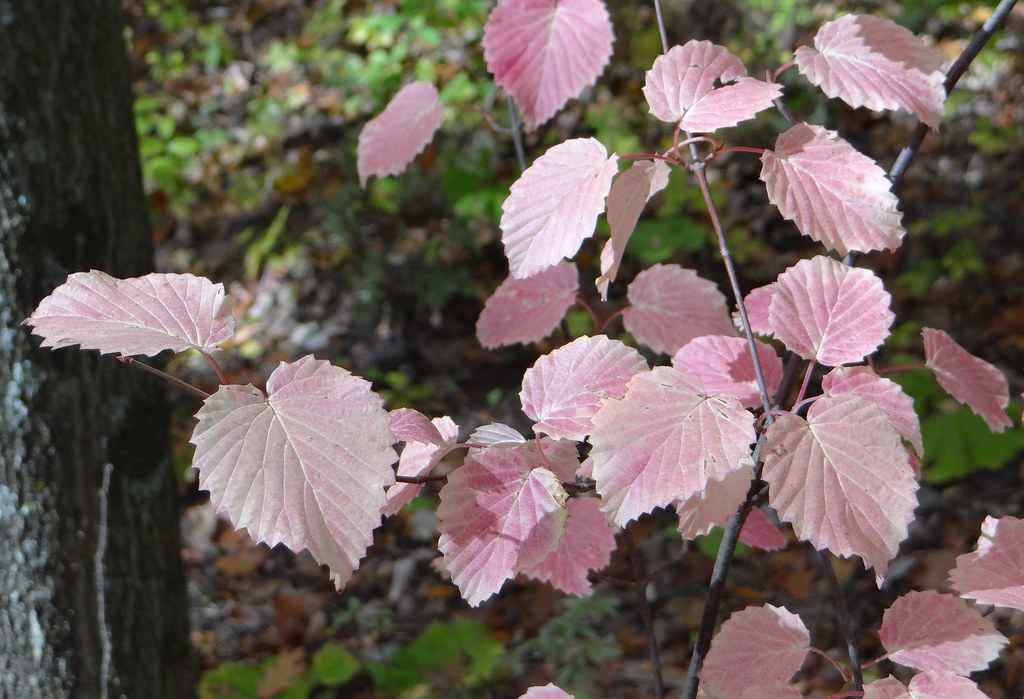
Fall color is also renown in shrubs and YES, there is pink fall color! This is a seedling Arrowwood Viburnum (Viburnum dentatum) in the Rock & Waterfall Garden. Arrowwoods are native to Missouri and often when they are grown in shade, they develop this unique pink fall color. Our 'Redwing' Cranberrybush Viburnums (Viburnum trilobum) in the Rock & Waterfall Garden are also pink now.


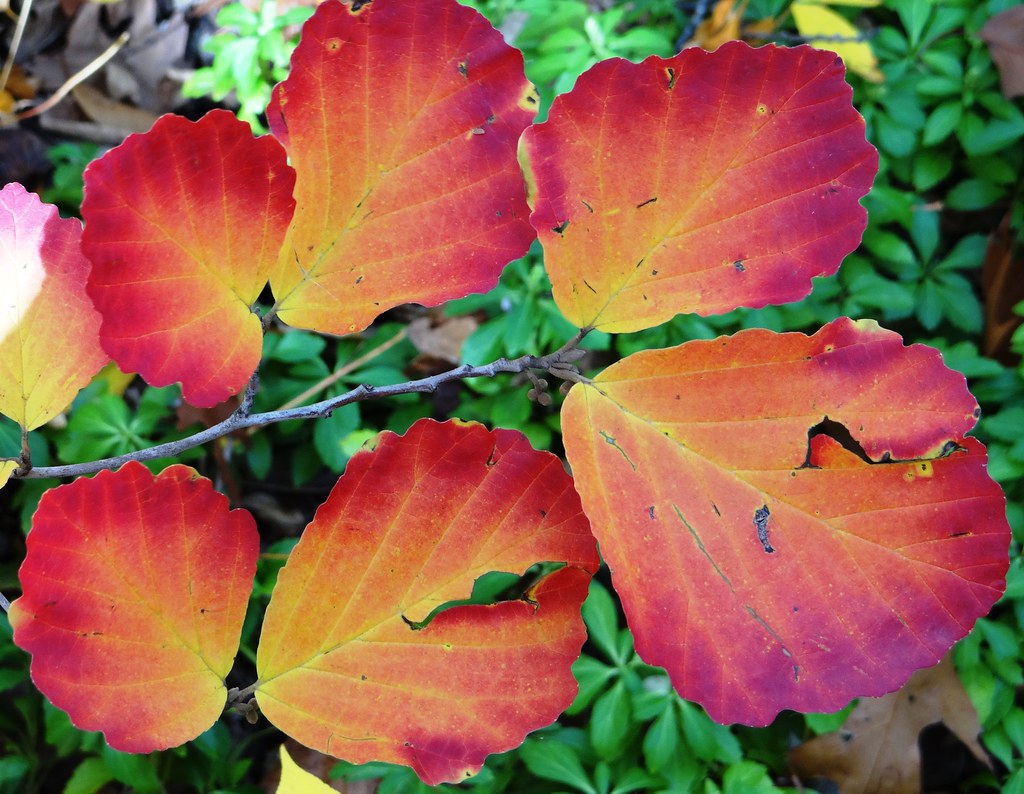




No comments:
Post a Comment